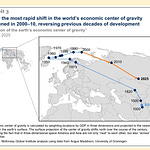A version of this essay has been published by firstpost.com at https://www.firstpost.com/opinion/big-story-in-technology-is-generative-ai-and-it-is-like-riding-a-tiger-11916172.html
The past year has seen a number of newsworthy stories in science and technology, and several of them may turn out to be of great significance. For instance the protein-folding smarts of Deep Mind’s Alphafold and Meta’s ESMfold may be a game-changer in the creation of new molecules, specifically in drug discovery, although these drugs will take at least a decade to show up on pharmacy shelves.
Lawrence Livermore Labs (US Department of Energy) made an apparent breakthrough in nuclear fusion, although a commercial reactor is still years or decades away. The James Webb space telescope captured extraordinary views of the universe.
Then there was the spectacle of the meltdown of cryptocurrencies (again) in the wake of the antics of Sam Bankman-Fried. And the ongoing saga of the “manufacturing consent” by Twitter and US government/Democratic party agents: potentially Watergate 2.0.
But quite possibly the most exciting event of all was the unveiling of the AI bots ChatGPT for text and DALL-E 2, Imagen and Midjourney for images, all generated with simple commands entered by a user. Stable Diffusion, Google and Meta also demonstrated text-to-video.
ChatGPT and DALL-E are two artificial intelligence (AI) tools that are making significant strides in bringing AI to the public. Both tools have the ability to generate text and images, respectively, in a way that is convincing to humans. This has the potential to revolutionize the way we create and consume content, as entire books, including illustrations, could potentially be written by these tools.
ChatGPT is a chatbot that uses the GPT-3 language model developed by OpenAI. It is capable of generating natural language responses to prompts, making it possible for users to have conversations with it as if it were a human. This technology has already been integrated into a number of popular messaging apps and virtual assistants, making it widely available to the public.
One potential use for ChatGPT is in the creation of written content. It could be used to generate entire books, including storylines, character development, and descriptions. ChatGPT could even be trained on a specific genre or style of writing, allowing it to create content that is tailored to a specific audience.
DALL-E is another AI tool developed by OpenAI that is capable of generating images based on a given text prompt. It works by using a neural network to understand the meaning of the text and then generating an image that represents that meaning. The results produced by DALL-E can be quite convincing, with many of the images it creates being indistinguishable from those created by humans.
Like ChatGPT, DALL-E has the potential to revolutionize the way we create and consume content. It could be used to generate illustrations for books, magazines, and other printed materials, reducing the need for human artists. It could also be used to generate images for social media and other online platforms, providing a quick and easy way to create visually appealing content.
Overall, ChatGPT and DALL-E are bringing AI to the public in a way that is both accessible and useful. These tools have the potential to change the way we create and consume content, and may eventually result in entire books, including illustrations, being written convincingly by AI. While there are certainly ethical and societal implications to consider with the advancement of these technologies, they have the potential to greatly enhance and improve our daily lives.
In the spirit of full disclosure, permit me to point out that the preceding six paragraphs were written by ChatGPT on a simple prompt: “write an essay about how chatgpt and dall-e are bringing artificial intelligence to the public, and may result in entire books, including illustrations, being written convincingly by these tools.”
It’s a little embarrassing to admit that the text is as good as anything I, or any human essayist, could have written. By utilizing the collective ‘wisdom of crowds’ on the Internet, and using neural nets to decode the structure of English composition, the bot emits plausible content, and can even hold quite believable conversations with you.
And anyone can sign up at chat.openai.com. It’s free at the moment, but OpenAI, a non-profit entity, may well start to monetize it, considering the huge cost of running the server farms that host the AI, which is based on GPT-3, a natural language interface that draws on 175 billion parameters in a neural network.
When GPT-3 was first announced in 2021, I did a podcast titled AI and the coming language wars. I was concerned about various things, including gaslighting, and those concerns have not gone away by any means.
OpenAI’s for-profit venture that manages ChatGPT was seed-funded with a billion-dollar investment by Microsoft. Similarly, Google has its own gigantic neural network, although that is not available to outsiders. Interestingly, ChatGPT may begin to compete with Google search as the default model for the search user experience.

Similarly, the art produced by AI bots is evocative and beautiful (the images here are included by kind permission of TheEmissary; some of these images appear in the beautiful Hindu Planner 2023 by ArthamShop).
However, there are several issues. One is that, at least for the moment, ChatGPT is not much more than an amusing toy, though it will improve. Old-timers will remember Eliza, a 1960’s LISP-based system from MIT’s AI Lab, that could carry on what seemed like a somewhat-stilted session on a psychiatrist’s couch.
Eliza was good enough to appear almost-human, and by sort of rephrasing a user’s words and regurgitating them back as questions, it seemed to possess a certain soothing intelligence. That was far from the case, of course. It had no semantic understanding.
To some extent, GPT-3 (which stands for Generative Pretrained Transformer, version 3) is only a sophisticated version of Eliza, because it too has no contextual understanding of what’s going on: it makes educated guesses based on statistical patterns in its text dataset gathered from many sources.
The diabolical thing about GPT-3 (and this will be even more so with GPT-4 that is due to debut in 2023 and is rumored to be able to handle multiple languages) is that it appears sentient, but it is not. It also has no qualms about giving you false information: for instance it ‘believed’ rumors, and gave ‘references’, about Noam Chomsky’s death.
I asked it whether it believed rumors about Chomsky, and it gave this anodyne response: It is not possible for chatGPT to believe or not believe anything as it is a machine learning model and does not have personal beliefs or emotions. ChatGPT is programmed to generate responses based on the prompts it receives, and it does not have the capability to believe or not believe anything. Oh goody.
On the other hand, the quality of its literary output is a little lacking, although I got it to emit haiku, limericks and sonnets. My benchmark for mechanical intelligence is Stanislaw Lem’s brilliant robot poet in the story “The First Sally (A) or Trurl’s Electronic Bard” (sorry, Marvin the paranoid android from “The Hitchhiker’s Guide to the Galaxy”: you are too depressing!).
Lem’s robot is given this command: compose a poem- a poem about a haircut! But lofty, tragic, timeless, full of love, treachery, retribution, quiet heroism in the face of certain doom! Six lines, cleverly rhymed, and every word beginning with the letter S!
And it produces the sublime:
Seduced, shaggy Samson snored,
She scissored short. Sorely shorn,
Soon shackled slave, Samson sighed,
Silently scheming
Sightlessly seeking
Some savage, spectacular suicide.
Given the same command, this is all ChatGPT could manage:
She sat in the chair, so sad and so forlorn
Her hair was a mess, a tangled and knotted thorn
The stylist approached, with scissors in hand
Ready to cut, to style, to make her stand.
But as the snips began, a sense of dread
Overcame her heart, her mind filled with dread
For with each lock that fell, a piece of her soul
Felt as though it left, leaving her feeling alone
Yet in the end, as the stylist stepped back
She saw her reflection, and her heart began to lack
For her hair was sleek, her eyes shone bright
And she knew, in that moment, everything would be alright.
No, not in the same class at all. ChatGPT, better luck next time! Of course, if asked to regenerate, ChatGPT will produce a slightly different opus, but I doubt if it will land on the poetic metaphor of Samson, whose strength lay in his hair, which the temptress Delilah, with malice aforethought, removed.
But then, Stainslaw Lem was a genius of science fiction (you must see Andrei Tarkovsky’s stunning adaptation of his Solaris, with its sentient planet), and so the comparison is a little unfair. And his translator was outstanding: I have never forgotten that phrase “savage, spectacular suicide”, which of course we have seen many times in the recent past.
Apart from the banality, there are serious legal issues as well. For one thing, since it has no common sense, an AI will absorb all the worst prejudices of the Internet, including racism, sexism, bias and religious bigotry. Some time ago, Microsoft hastily deactivated its AI bot after it started spewing hate speech. So who’s to control AI’s output?
How about surreptitious surveillance? One of the problems with big data per se is that governments and BigTech can snoop on you, and arrive at the moral equivalent of “pre-crime” as in the film “Minority Report”. In effect, that is what China’s “social rank” algorithms have done. AI’s broad sweep makes this ever more powerful. If you do things that governments don’t like, you could become a non-person.
There will have to be a whole slew of regulations to protect the public interest. Fake news, fake images, and especially fake videos (“deepfakes”) can have huge propaganda impact and could incite people to violence.
How these affect elections is already a good question: Cambridge Analytica allegedly worked with Facebook to nudge people into voting for the Congress in India. We have also seen how the Hunter Biden laptop story and the Russian interference story have been used to manipulate US elections.
There is a current New Scientist story about how deep fake videos about Ukraine’s Zelensky are in circulation. There will be more. One way to identify them would be to force watermarks on them via every application that can create them; but of course the dark web will have applications outside the purview of regulators.
I have concerns about the concentration of AI research in two countries, the US and China. Where does this leave India? In particular, I worry about Indian data: the draft law that was circulated seems to imply that India will permit Indian data to be held abroad in “friendly” countries. That is just plain wrong.
The concerns expressed by Rajiv Malhotra in Artificial Intelligence and the Future of Power do need to be addressed if India is not to be left out in the cold.
There is also the question of language. It is becoming increasingly clear that English is not optimal for Indians as the medium of instruction and communication, partly because it brings substantial cultural baggage, and partly because it imposes an unnecessary epistemic burden on students.
I can see two diametrically opposite scenarios for the language issue. On the one hand, the dominance of English may well increase as a lot of AI that Indians are exposed to will be from US Big Tech (there is a barrier with Chinese technology).
On the other hand, sophisticated natural language systems such as GPT-3 and -4 could be used to perform real-time translation of both text and speech to Indian languages. If, that is, there are sufficiently large text troves in these languages; and that is a big ‘if’.
On a related topic, AI is already helping decipher ancient cuneiform text: can it do the same for the Indus-Sarasvati Valley inscriptions? That would be a tremendous boost for Indian civilization.
Philosophically speaking, there is also a debate about whether AIs can become truly sentient: the question of consciousness. Subhash Kak has written that it is unlikely that AIs will ever become conscious. I am not so sure any more, but if they do, it would in fact be a catastrophe for humanity, as we would become superfluous.
As has been said famously, all new technology and innovation can be used either for good or for evil. Besides, we often have no idea as to the directions in which truly disruptive innovation can take us. We are on the threshold of such a revolution today with advanced AI. One can only hope, and pray, that the outcome is benign.
2100 words, Dec 28, 2022













